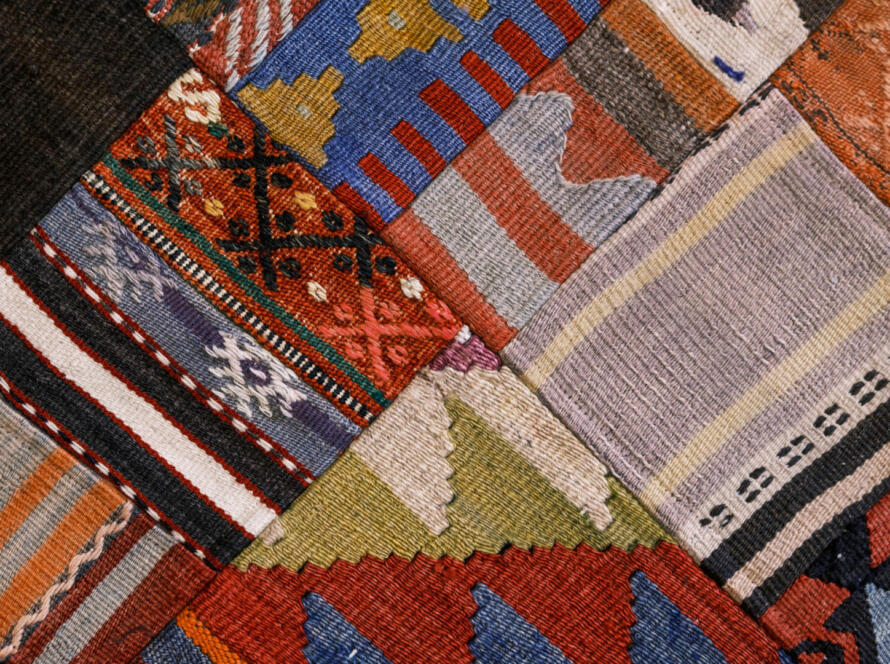Carpet designs encompass the variety of patterns, textures, and colours available in carpets, each crafted to suit different tastes and interior styles. There are several types of carpet designs, including cut pile, created by cutting the yarn loops, providing a plush and soft texture, loop pile, featuring loops of yarn, offering durability and a more textured surface, cut and loop that combines both cut and looped fibres to create unique patterns, frieze which has tightly twisted fibres for a shaggy, casual look and patterned that incorporates various patterns, from geometric to floral, adding visual interest.
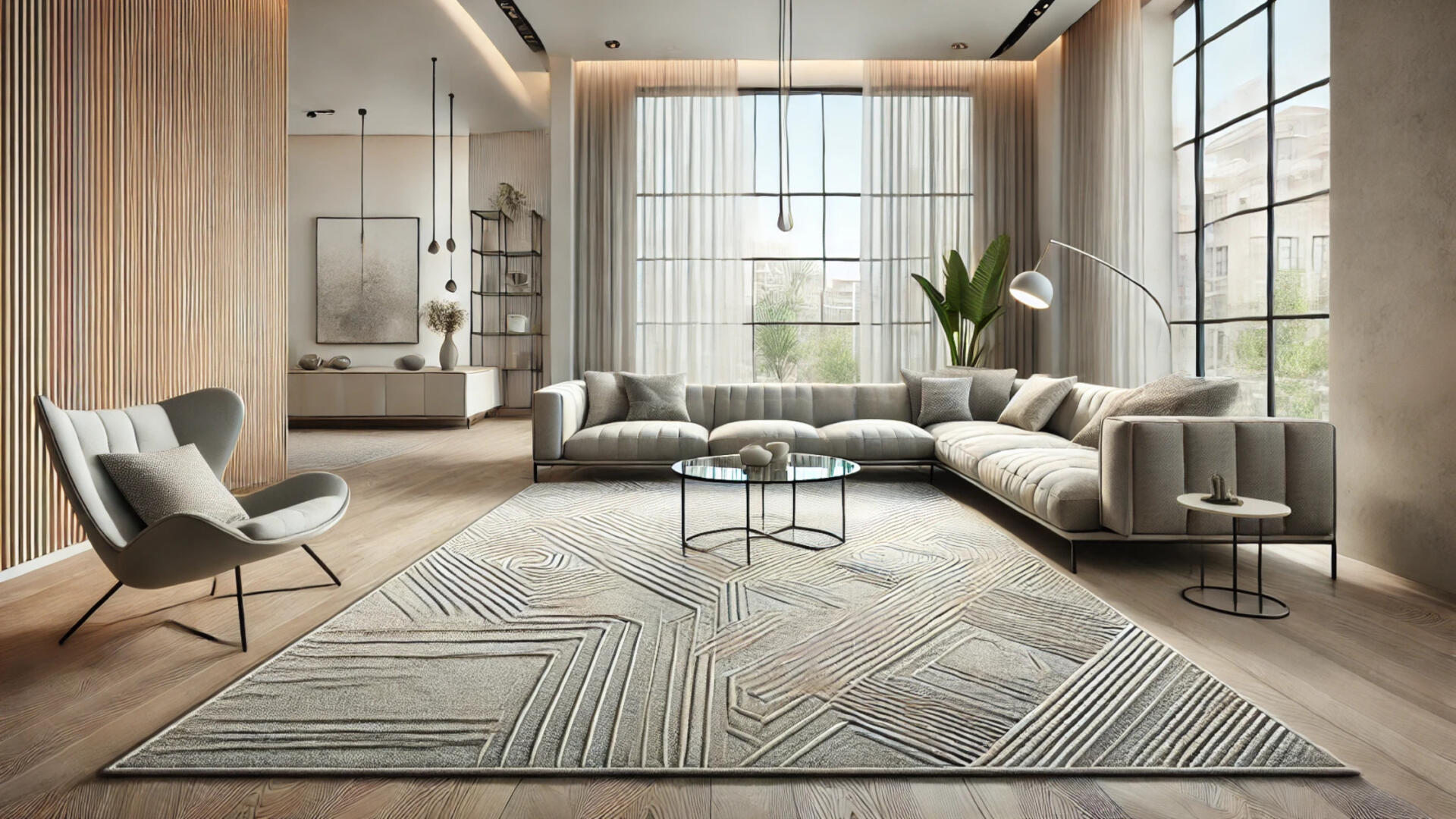
How Carpet Designs Influence the Overall Aesthetic of a Room
Carpet designs play a crucial role in shaping the look and feel of a room. Here’s how different elements of carpet design influence interior aesthetics:
Colour
The colour of a carpet can set the tone for the entire room. Light colours make a space feel larger and more open, while dark colours add warmth and cosiness. Bold colours can create a focal point, while neutral tones provide a versatile backdrop.
Pattern
Patterns can enhance the visual appeal of a room. Large patterns make a statement and can dominate the décor, while subtle patterns add interest without overwhelming the space. Geometric patterns offer a modern vibe, while floral and traditional patterns bring elegance.

Texture
The texture of a carpet affects both its appearance and comfort. Smooth textures offer a sleek, refined look, while textured and shaggy carpets add depth and comfort. The choice of texture can influence the perceived formality or casualness of a room.
Size and Shape
The size and shape of carpets also impact the room’s aesthetic. A large area rug can anchor a seating arrangement, while smaller rugs can define different zones within an open-plan space. The shape of a carpet, such as round or rectangular, can complement or contrast with the room’s layout.

Basics of Mixing and Matching Carpets
The Principles of Colour Coordination in Carpets
Colour coordination is essential when mixing and matching carpets to ensure they complement each other and the room’s overall design. Here are key principles to consider:
Colour Wheel Basics
Understanding the colour wheel can help in selecting harmonious colour combinations. Complementary colours (opposite each other on the wheel) create vibrant contrast, while analogous colours (next to each other) offer a more harmonious look.
Neutral Base
Starting with a neutral base (such as beige, grey, or white) allows for greater flexibility in adding accent colours through carpets. Neutral carpets can balance out bold patterns and colours.
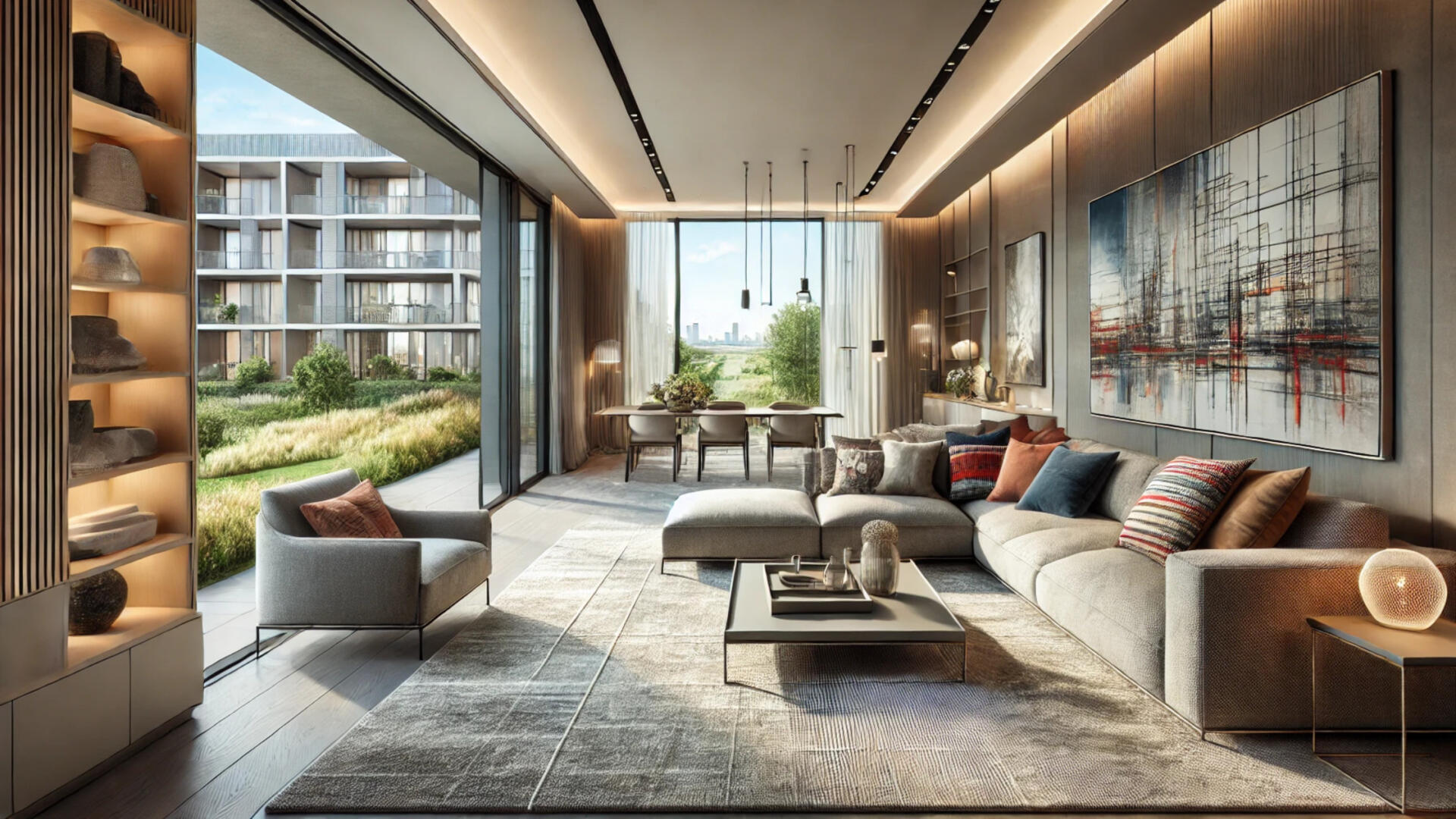
Accent Colours
Choose one or two accent colours from the room’s palette to incorporate into your carpet selection. This creates a cohesive look and ties the room together.
Colour Dominance
Ensure one carpet has a dominant colour that anchors the room, while others can feature complementary or contrasting hues in smaller doses.
Tone and Shade
Consider the tones and shades of the colours used. Warm colours (reds, yellows, oranges) create a cosy atmosphere, while cool colours (blues, greens) provide a calming effect. Balancing warm and cool tones can enhance the room’s ambience.

Understanding Pattern Blending and Its Impact on Interior Design
Patterns can transform a room, but blending them requires skill to avoid clashing:
Scale and Proportion
When mixing patterns, vary the scale to create balance. Pair a large-scale floral pattern with a small-scale geometric design to avoid competition between patterns.
Unified Colour Scheme
Ensure patterns share a common colour scheme. This unifies the designs and prevents them from appearing disjointed.
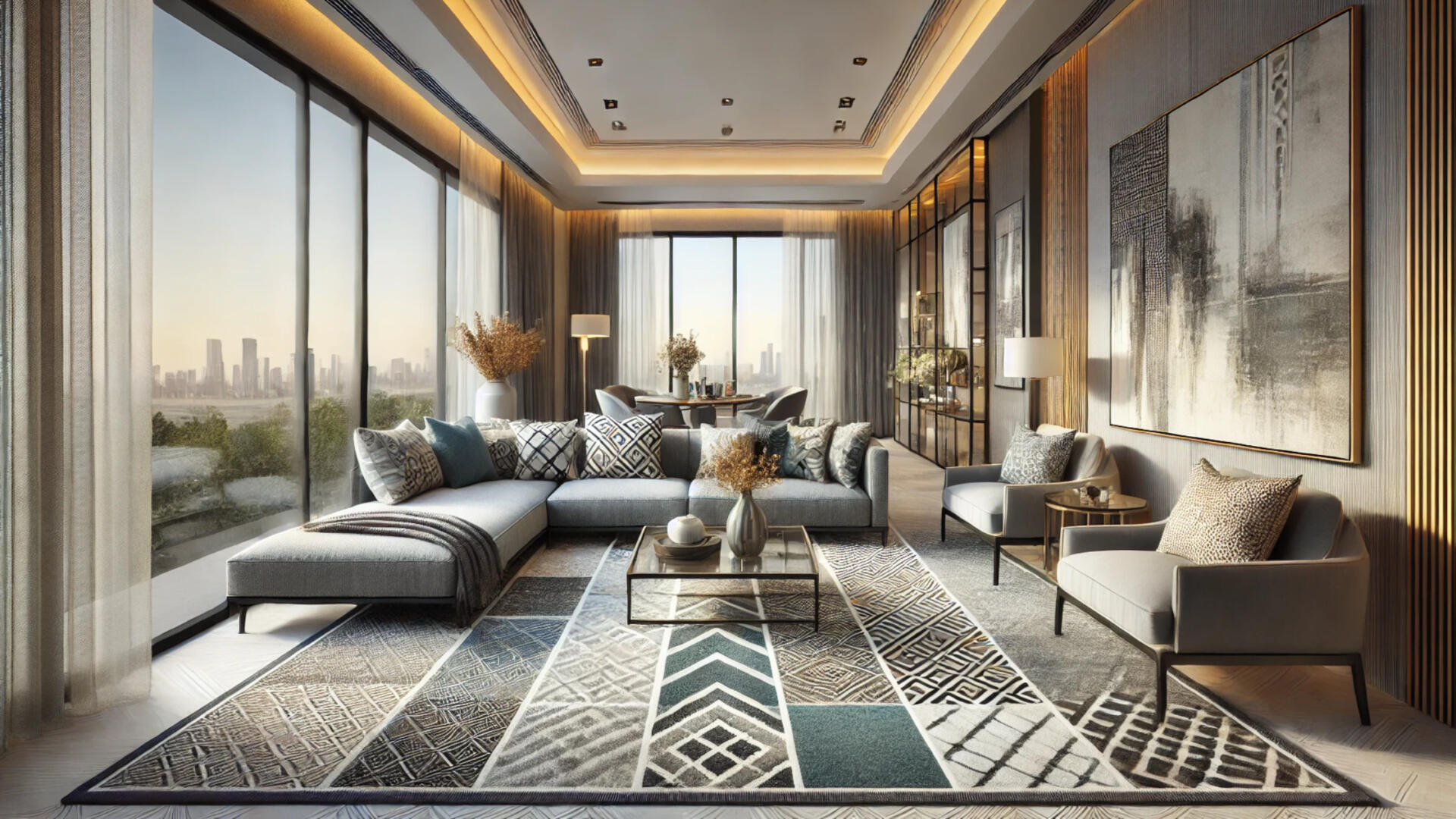
Pattern Hierarchy
Establish a hierarchy with one dominant pattern and supporting patterns that are less bold. This creates a focal point and guides the eye.
Pattern Type
Mix different types of patterns (e.g., floral, geometric, abstract) to add diversity, but ensure they share a visual or thematic connection.
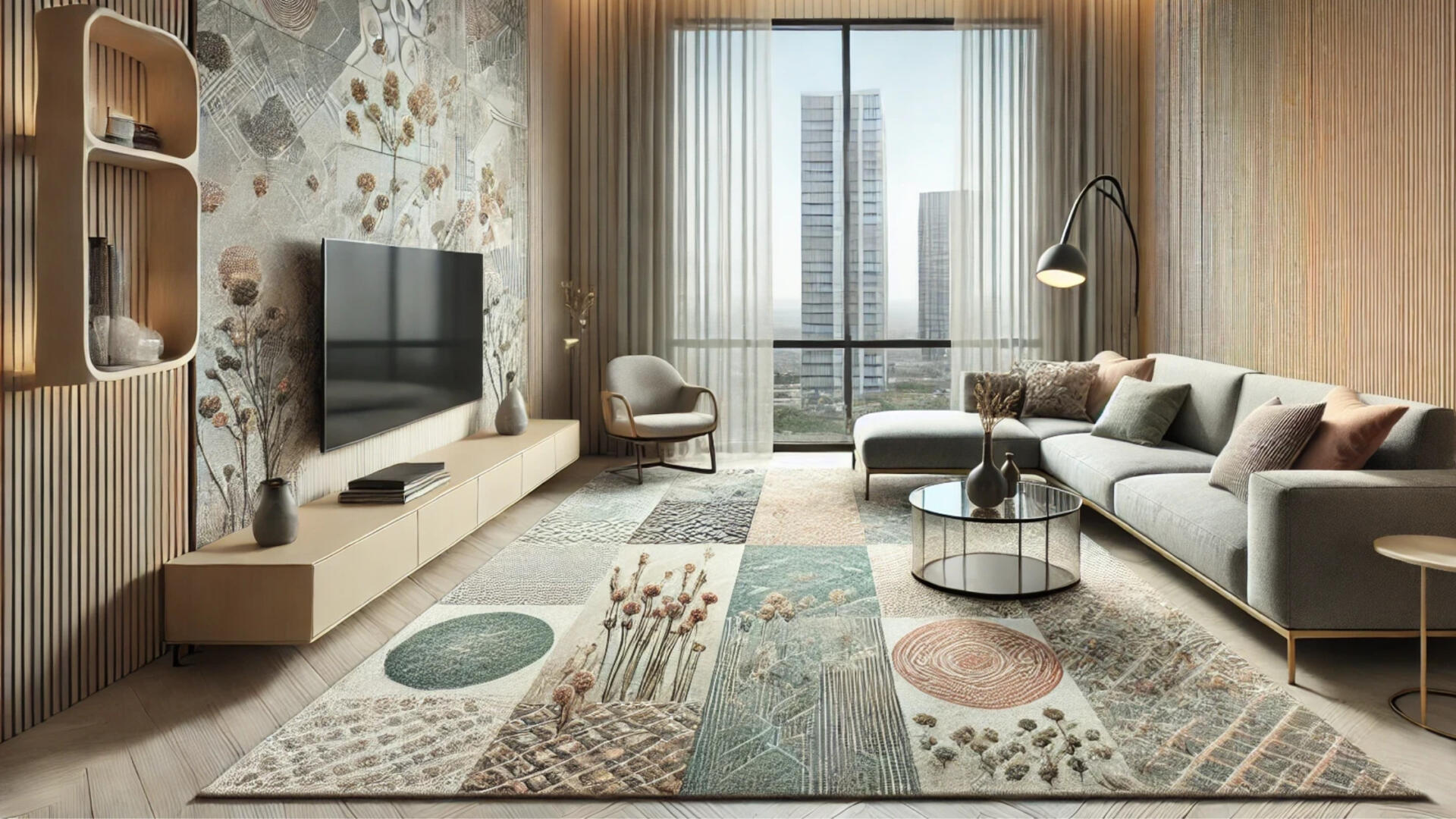
Negative Space
Allow for negative space (solid areas without patterns) to give the eyes a place to rest and prevent the room from feeling too busy
Combining Rug Designs: Different Shapes and Sizes
Combining rugs of different shapes and sizes can create a dynamic and visually appealing layout. Here’s how to do it:
Define Zones
Use different rugs to define separate zones within an open-plan space. For example, place a large rectangular rug under the dining table and a smaller round rug in the living area.
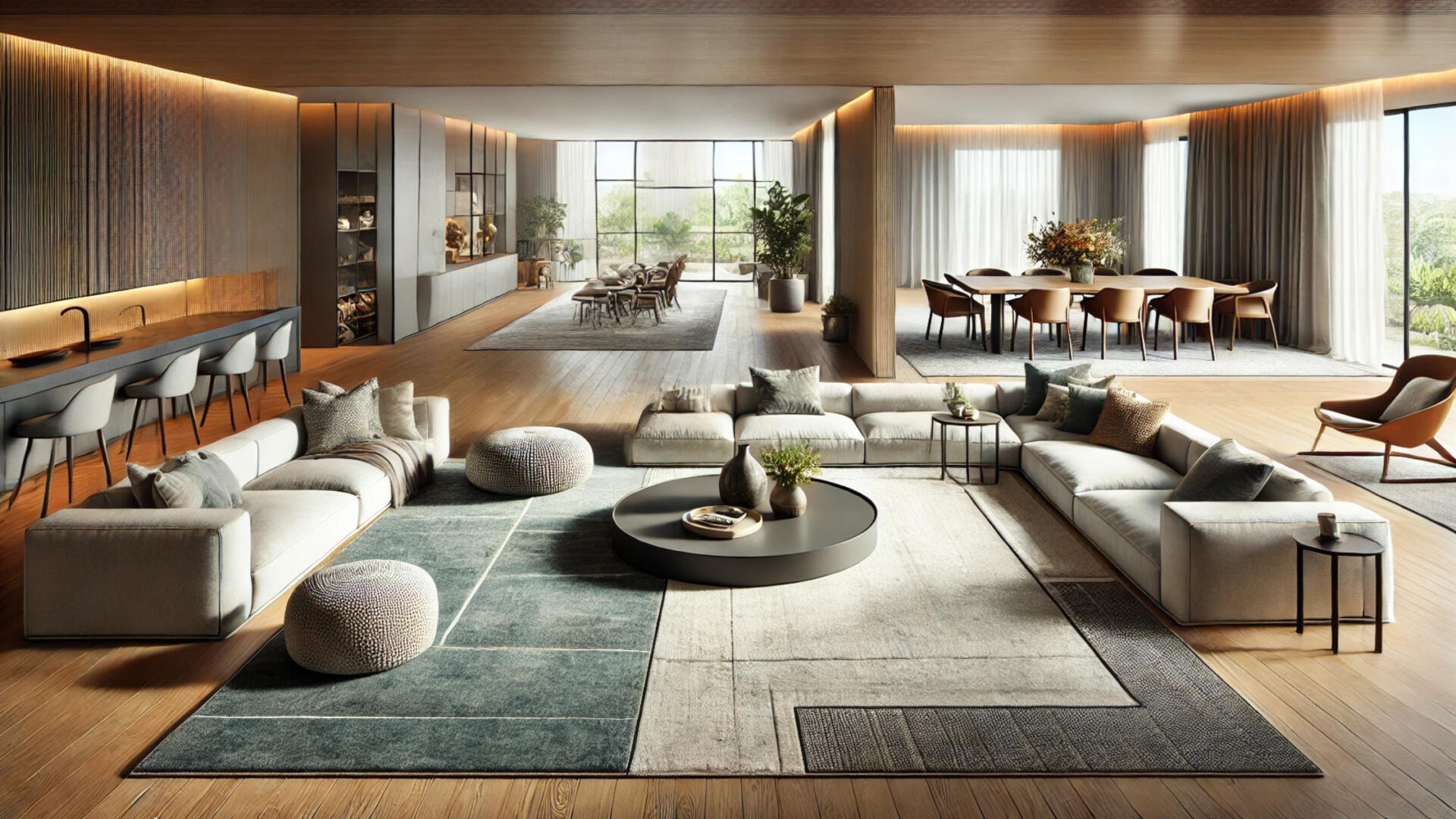
Balance Proportions
Ensure the sizes of the rugs are proportional to the space and furniture. A large rug should anchor a seating area, while smaller accent rugs can highlight specific pieces, such as coffee tables or side tables.
Shape Variety
Mix shapes for visual interest. Pair a rectangular rug with a circular rug to break up the monotony and add a playful element.
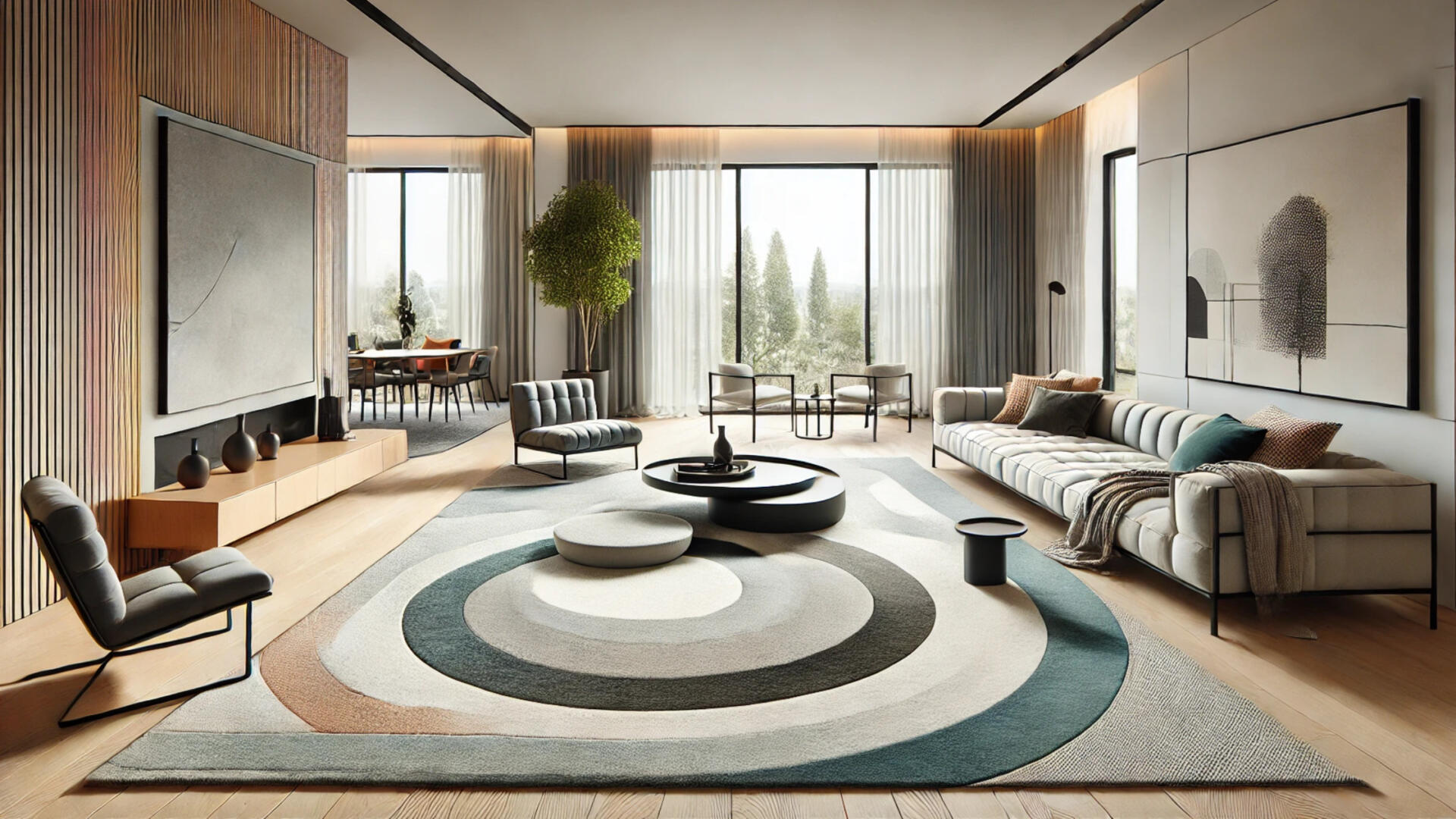
Layering with Shapes
When layering, consider the shapes. For instance, layer a smaller square rug on top of a larger rectangular rug to create a focal point.
Complementary Colours and Patterns
Choose rugs with complementary colours and patterns to ensure they work well together. A cohesive colour scheme helps tie the different shapes and sizes together.
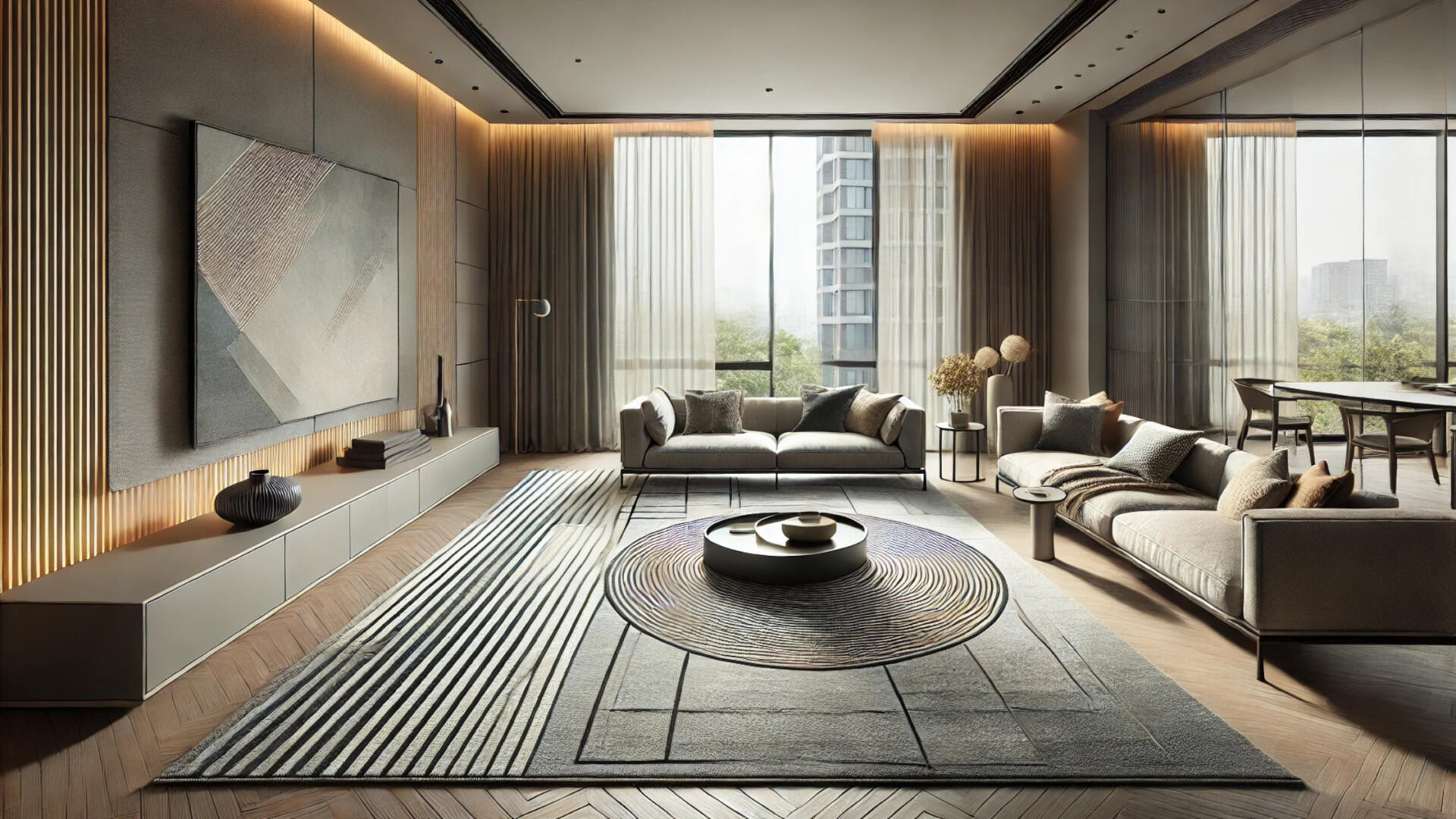
Symmetry and Asymmetry
Use symmetry for a formal look and asymmetry for a more casual, eclectic style. Symmetrical arrangements create order, while asymmetrical layouts add a unique, creative touch.
Highlighting Common Pitfalls when Mixing and Matching Carpets
Ignoring Proportion
Using carpets that are disproportionate to the room’s size or furniture can disrupt the balance. Oversized or undersized rugs can make the space feel awkward.
Clashing Colours
Selecting carpets with clashing colours can create visual dissonance. Without a cohesive colour palette, the room can appear chaotic and uncoordinated.

Overwhelming Patterns
Mixing too many bold patterns can overwhelm the space. Without careful consideration, the patterns can compete for attention rather than complement each other.
Lack of Cohesion
Using rugs with vastly different styles without any unifying elements can result in a disjointed look. The lack of cohesion can make the room feel fragmented.
Neglecting Functionality
Choosing carpets that aren’t suitable for the room’s function can lead to practical issues. For example, placing a delicate rug in a high-traffic area can result in rapid wear and tear.
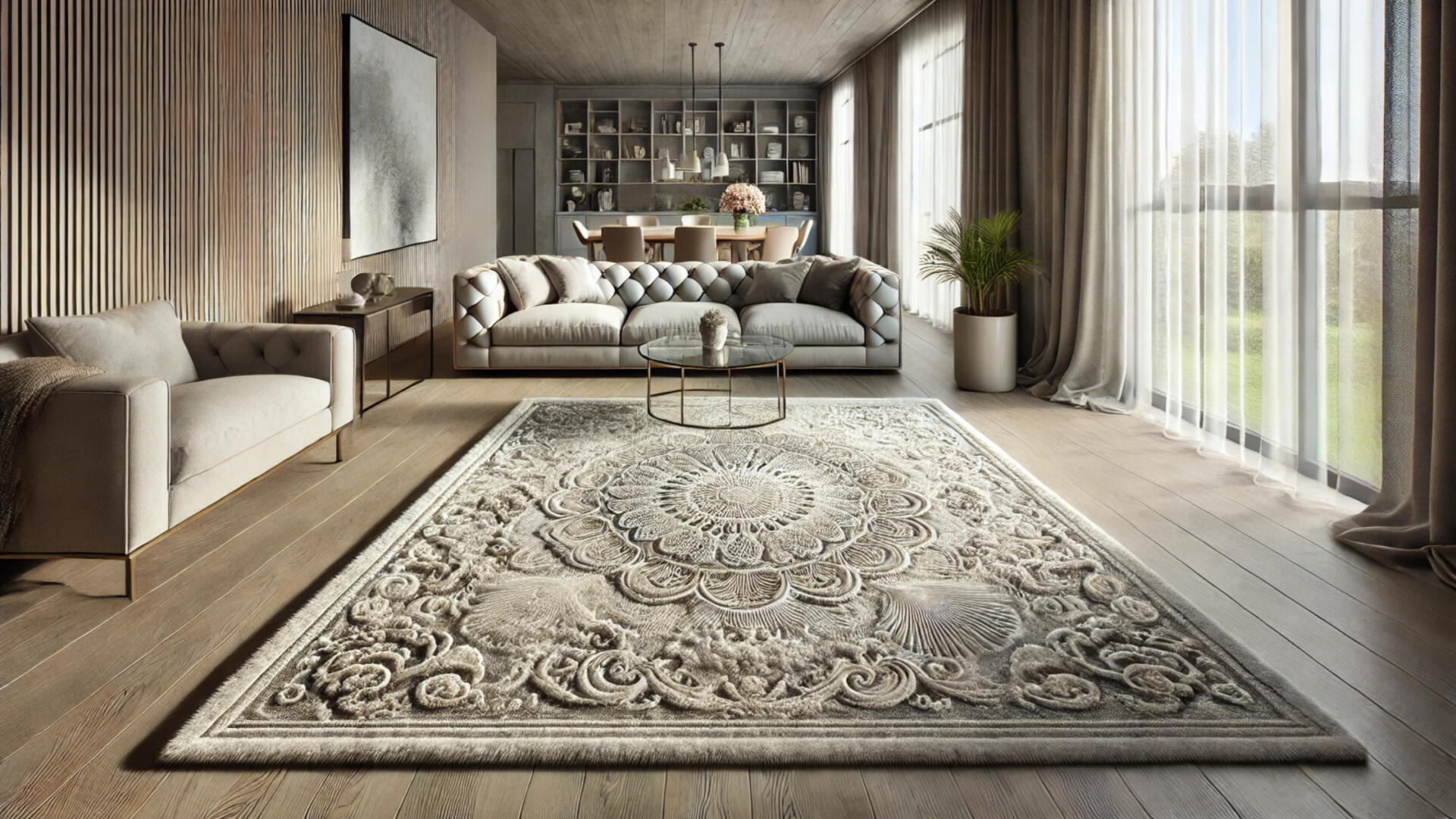
Ignoring Maintenance
Failing to consider the maintenance requirements of different carpets can lead to difficulties in keeping them clean and in good condition.
By avoiding common pitfalls, adhering to tips for maintaining a balanced look, and ensuring that your carpet choices complement the overall interior design, you can create a cohesive, aesthetically pleasing space with mixed and matched carpets.
Mixing and matching carpets is an art form that allows for personal expression and creativity in home décor. So, take the leap, experiment with different combinations, and enjoy the process of transforming your space with stunning carpet designs.
Frequently Asked Questions
What are the key factors to consider when mixing and matching carpets?
- When mixing and matching carpets, several key factors must be considered to ensure a harmonious and visually appealing result. Start with the colour scheme; choosing carpets with complementary colours or a unified palette helps maintain cohesion.
- Texture is another critical factor—mixing different textures can add depth and interest, but they should balance each other. Patterns should be selected carefully, with attention to scale and dominance to avoid clashing designs.
- Additionally, consider the size and shape of the carpets to ensure they fit well within the space and with the furniture arrangement. Finally, the functionality of the carpets in various areas, especially in high-traffic zones, should not be overlooked. Durable and easy-to-maintain options are essential for practicality.
How can I layer rugs without making the room look cluttered?
- To layer rugs without creating a cluttered appearance, begin with a neutral or subtly patterned base rug that covers a significant portion of the floor, providing a cohesive foundation.
- Add a smaller, more vibrant or textured rug on top, ensuring it complements the base rug in colour and style. Overlapping the rugs slightly can create a seamless transition and avoid visual dissonance.
- It’s crucial to maintain a balance between patterns and textures- pair a bold, patterned rug with a simpler, solid one to prevent overwhelming the space. Negative space around the rugs helps to keep the room airy and open.
- Additionally, using rug pads can ensure the rugs stay in place, contributing to a tidy and well-organised look.
Can I mix different styles of carpets, such as traditional and modern?
- Yes, mixing different styles of carpets, such as traditional and modern, can create a dynamic and eclectic look. The key is to find common elements that tie the designs together. For example, a modern geometric rug can pair well with a traditional Persian carpet if they share similar colours or tones.
- The contrast between the intricate patterns of a traditional rug and the clean lines of a modern one can add visual interest and depth to the room. It’s essential to maintain a balance and avoid mixing too many contrasting styles, which can result in a disjointed appearance.
- By thoughtfully selecting carpets with some unifying features, you can achieve a cohesive and stylish look that blends different design elements harmoniously.
How do I choose carpets that complement my existing interior design?
- To choose carpets that complement your existing interior design, start by considering the room’s colour scheme. Select carpets that match or complement the dominant colours in your space.
- Reflect on the room’s overall style—whether it’s modern, traditional, bohemian, or minimalist—and choose carpets that align with that aesthetic. Pay attention to the patterns and textures already present in the room, such as on upholstery, curtains, and other textiles. Carpets with similar or complementary patterns can create a unified look.
- Additionally, consider the function and flow of the room. For instance, in high-traffic areas, opt for durable and easy-to-clean carpets. By taking these factors into account, you can select carpets that enhance and harmonise with your existing décor.
What are some common mistakes to avoid when mixing and matching carpets?
- Common mistakes to avoid when mixing and matching carpets include neglecting proportion, which can make the space feel awkward. Using carpets that are too large or too small for the room or furniture can disrupt the balance.
- Clashing colours and overwhelming patterns are also pitfalls to watch out for, as they can create visual chaos. Ensure that the carpets have a cohesive colour palette and that bold patterns are balanced with simpler designs.
- Another mistake is not considering the room’s functionality; delicate rugs in high-traffic areas can quickly wear out.
- Additionally, ignoring maintenance requirements can lead to difficulty in keeping the carpets clean and in good condition. By avoiding these mistakes, you can achieve a more harmonious and aesthetically pleasing result.



